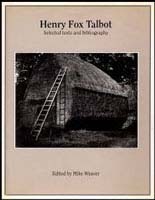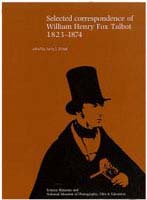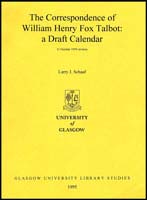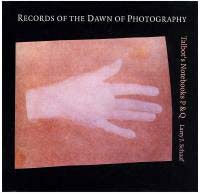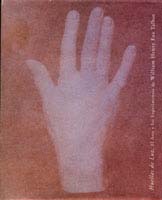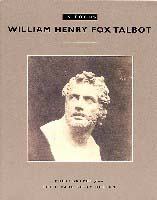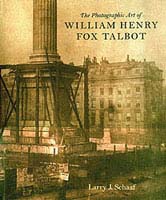Larry J Schaaf,
The Photographic Art of William Henry Fox Talbot
(Princeton: Princeton University Press, 2000).
One hundred of Talbot's photographs are reproduced in full size and full colour in this large format book. It examines the aesthetic influences on Talbot and his personal growth as an artist. The text draws extensively on Talbot's manuscript materials and the plate entries are linked to the Catalogue Raisonné now being compiled.
Mike Weaver,
Henry Fox Talbot; Selected Texts and Bibliography
(Oxford: Clio Press, Ltd., 1992).
Professor Weaver has gathered together a variety of texts by and about Talbot. The bibliography section is extensive and lists many of Talbot's lesser-known publications, such as those in the area of Assyriology.
Larry J Schaaf, Selected Correspondence of William Henry Fox Talbot, 1823-1874
(London: Science Museum, 1994).
In 1934, Matilda Talbot donated the larger portion of Talbot's archives to the Science Museum, including a group of about 300 of the most important letters that Talbot had received from scientists such as Sir John Herschel and Sir David Brewster. This volume contains a brief synopsis of each letter in this collection (which is now housed at the National Museum of Photography, Film & Television in Bradford).
Larry J Schaaf, The Correspondence of William Henry Fox Talbot; A Draft Calendar
(Glasgow: Glasgow University Library Studies, 1995).
Approximately 10,000 letters to and from Talbot are listed in this preliminary calendar. Details are included of the correspondents, the dates, the addresses, and the collection in which the letter is held, and the item's number within that collection. A rudimentary index indicates for which years some letters from each correspondent exist.
Larry J Schaaf, Records of the Dawn of Photography; Talbot's Notebooks P & Q
(Cambridge: Cambridge University Press, 1996).
Talbot maintained various series of research notebooks. These two, covering his researches from 1839-1843, are the ones most important to understanding his invention of photography. Each notebook page is reproduced in facsimile, opposite an expanded transcription of Talbot's text. There are extensive notes and a synoptic index, which promotes understanding of the archaic chemical terms of Talbot's day with modern terminology.
El Arte y los Experimentos de William Henry Fox Talbot (Madrid: Museo Nacional Centro de Arte Reina Sofia, 2001)
With texts in both Spanish and English, this is the best record of Russell Roberts' seminal 200th anniversary exhibition first seen at the NMPFT and expanded on for the Reina Sofia. This book includes copious illustrations from the work of Talbot and his circle, illuminated by essays from Geoffrey Batchen, Catherine Coleman, Michael Gray, Gerardo F Kurtz, Larry J Schaaf and Mike Ware.
Larry J Schaaf, In Focus: William Henry Fox Talbot
(Santa Monica California: The J Paul Getty Museum, 2002).
Fifty of the Getty's Talbot photographs are reproduced in reduced size but in full-colour. Their collection is particularly significant because of its synthetic nature, bringing together several outstanding private collections. The transcript of a Getty colloquium on Talbot held in October 2000 provides several points of view.
|
